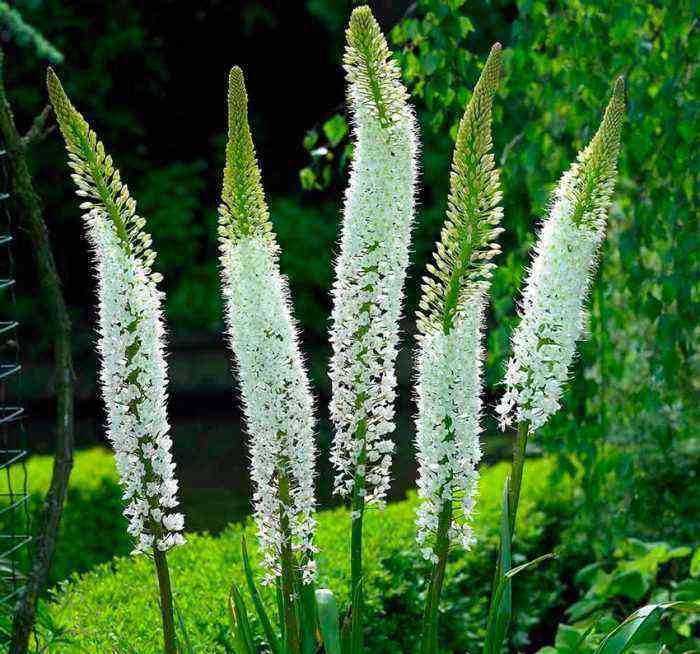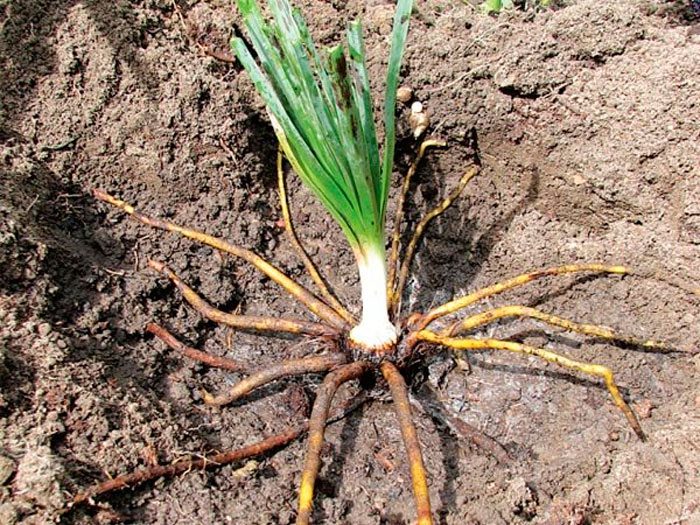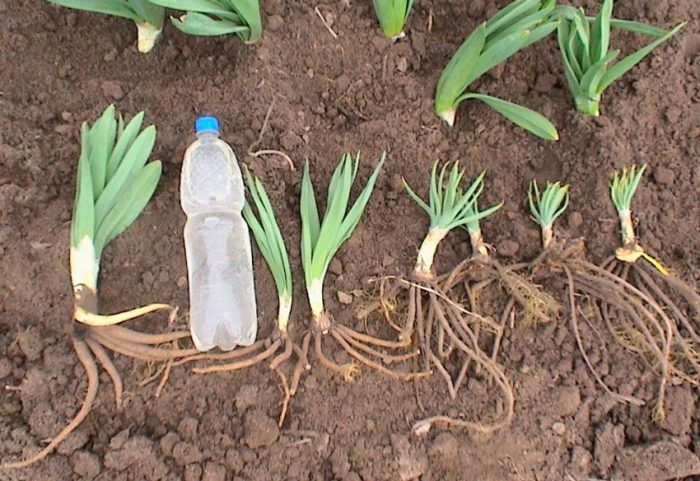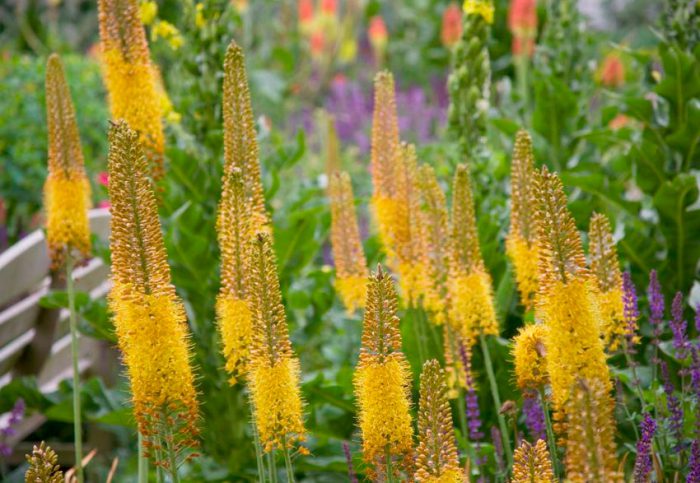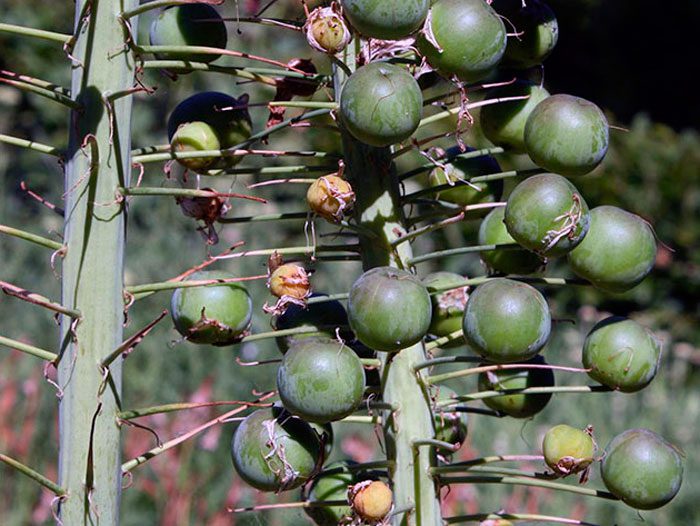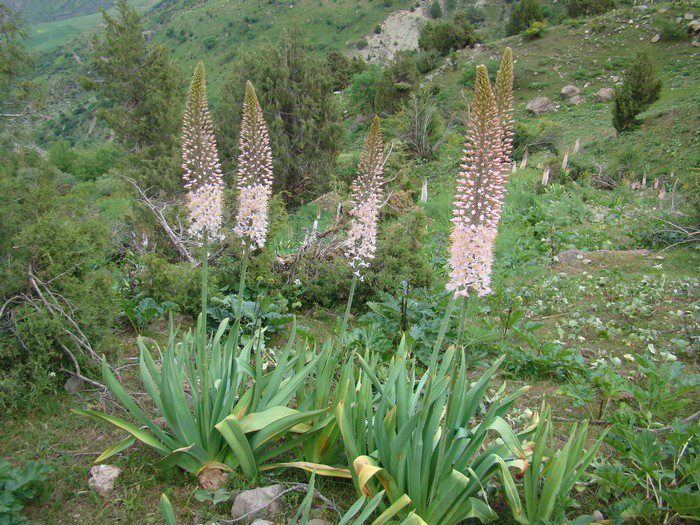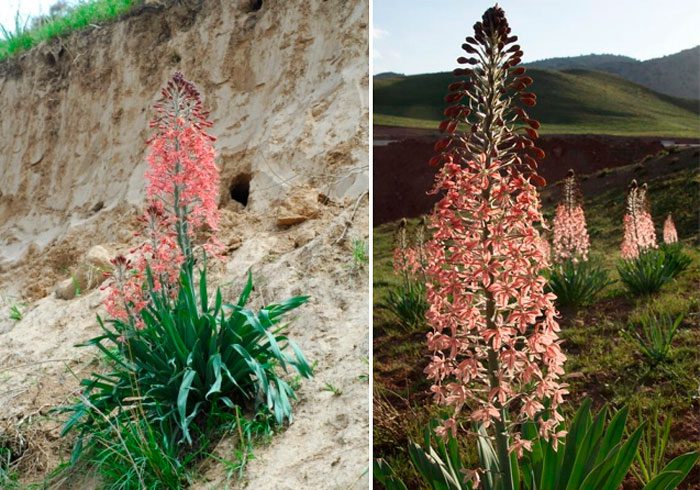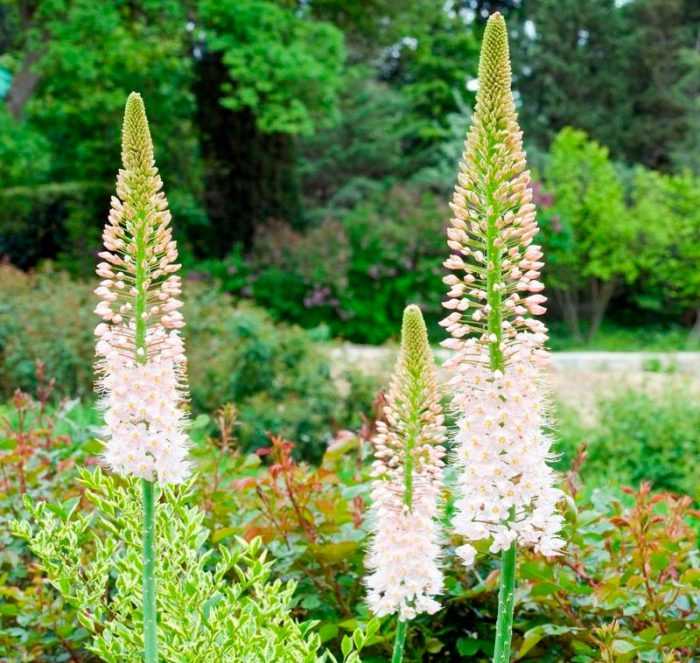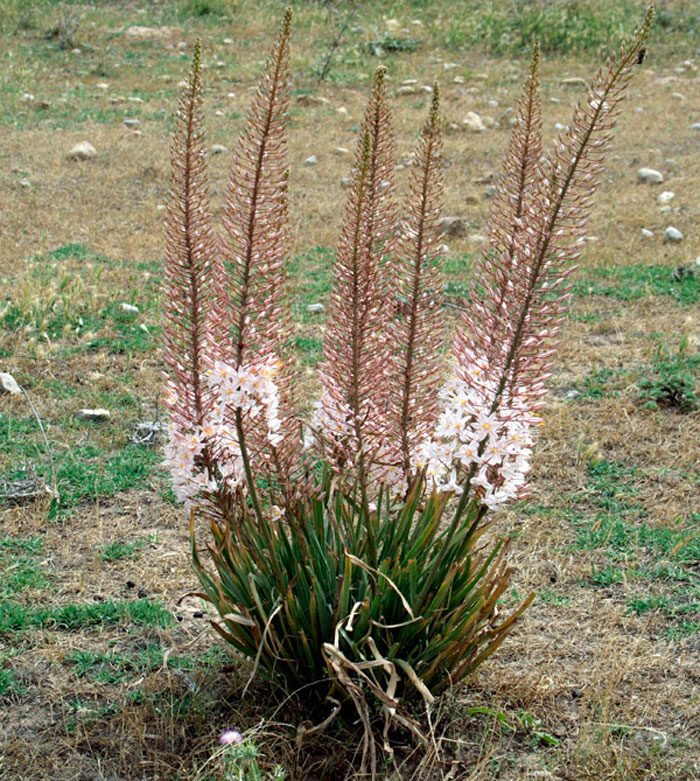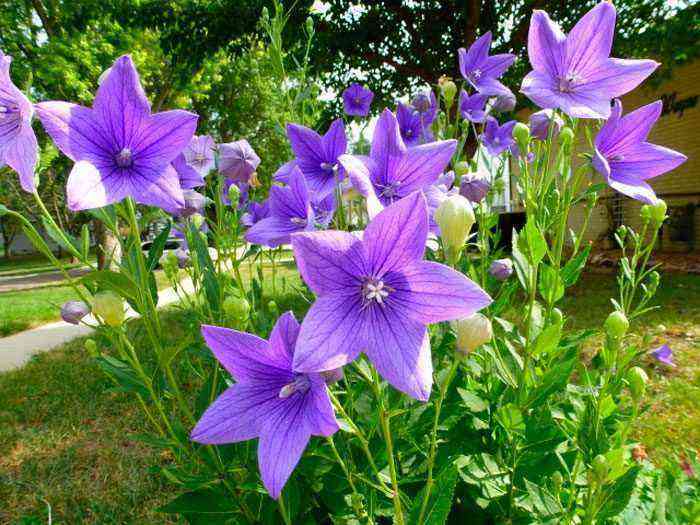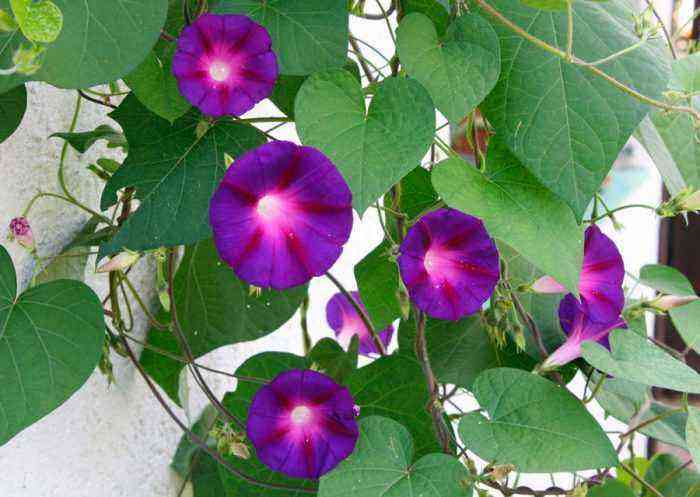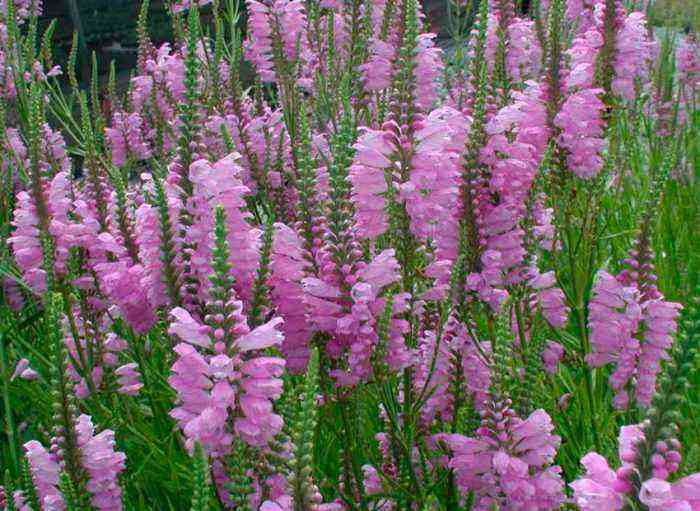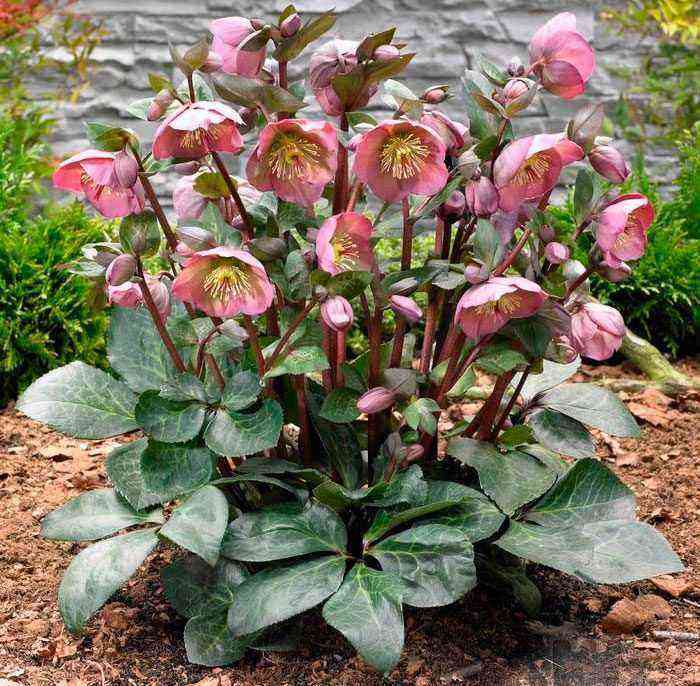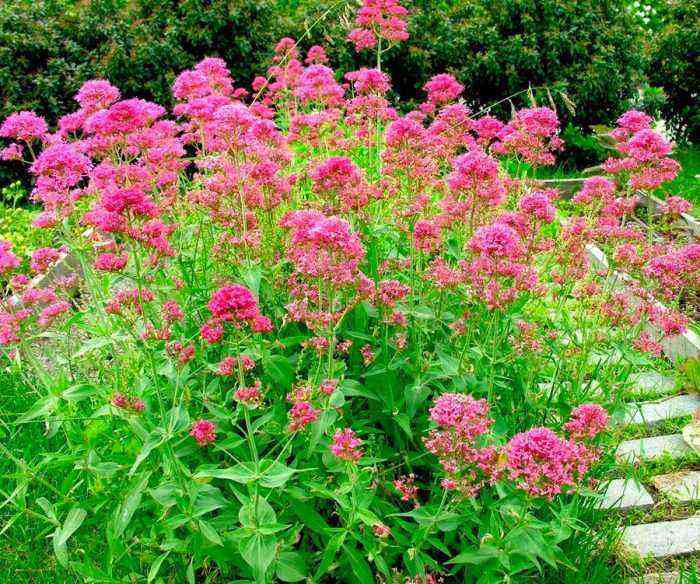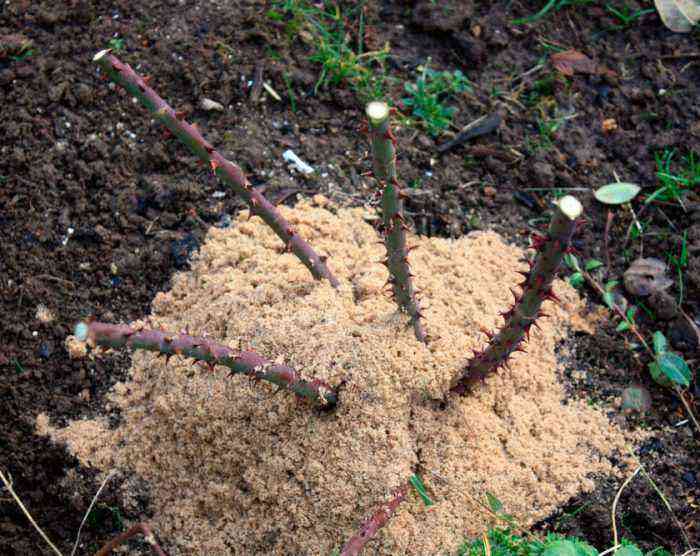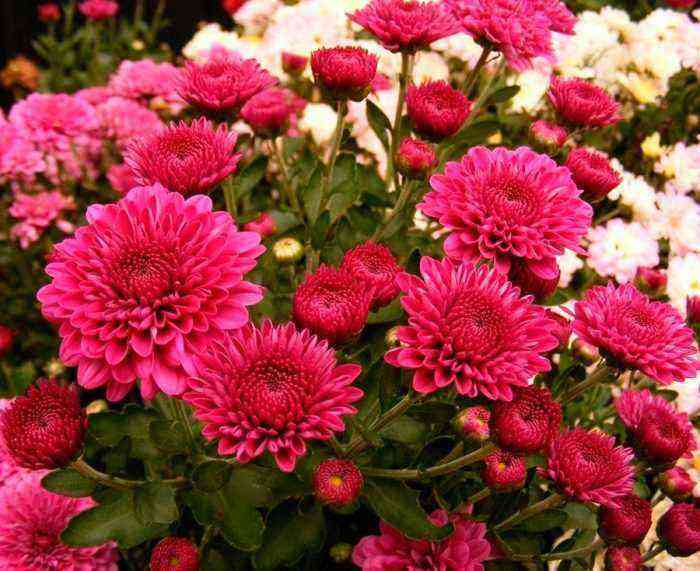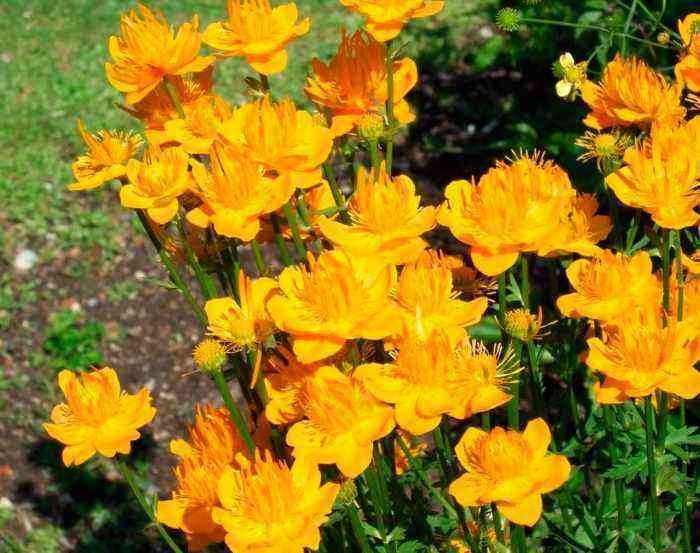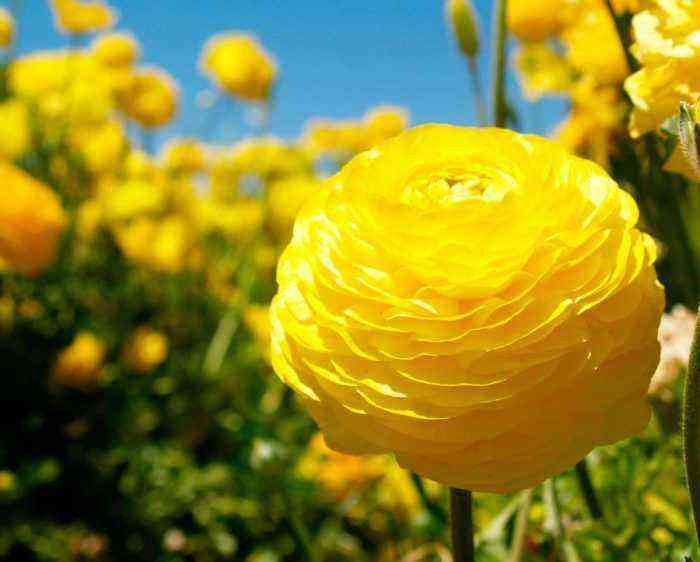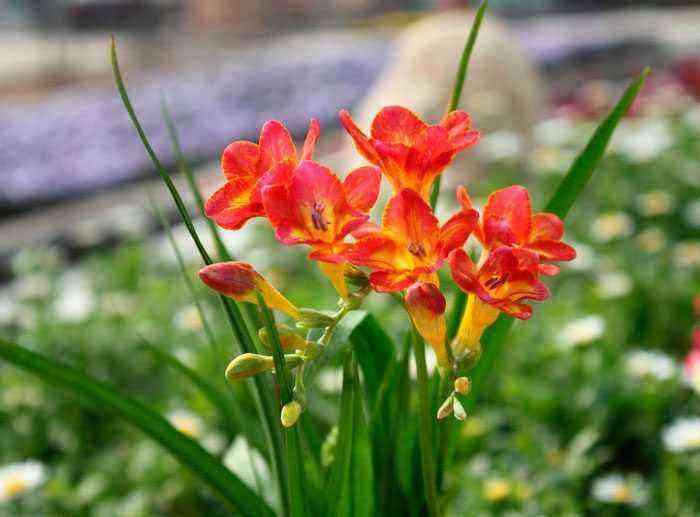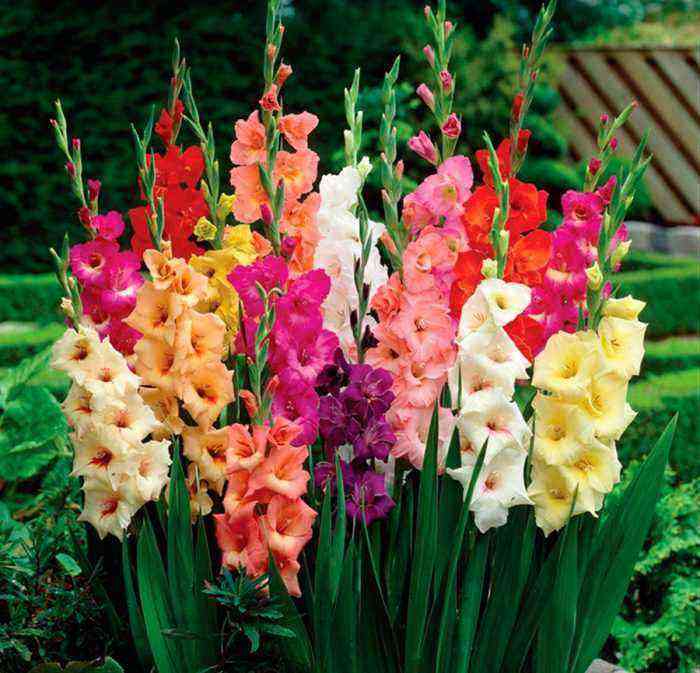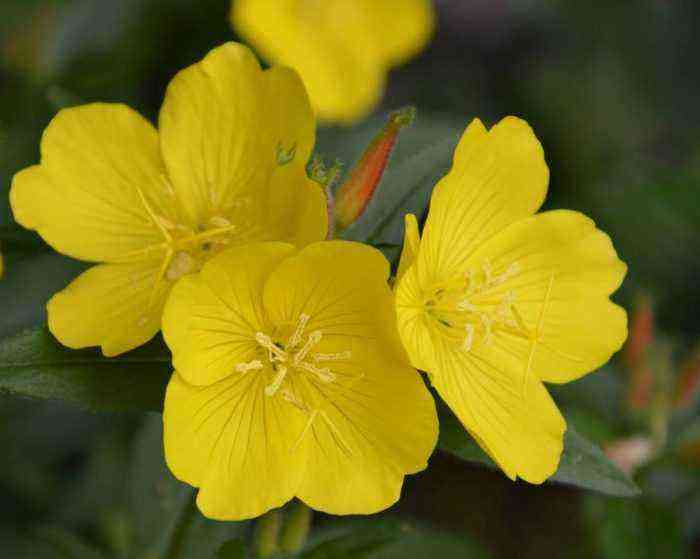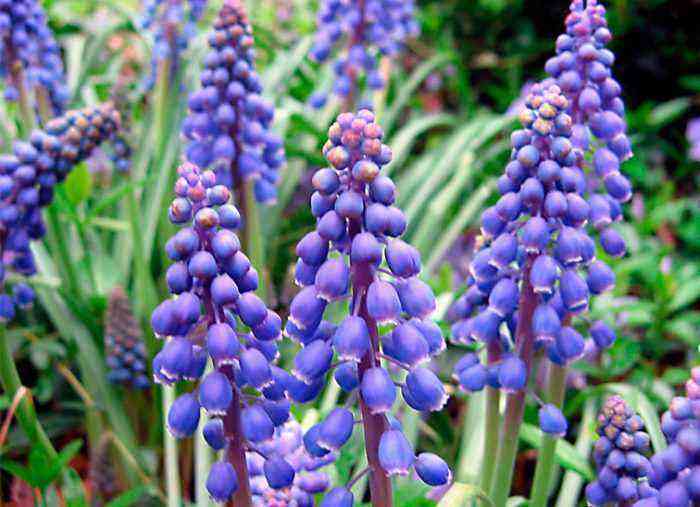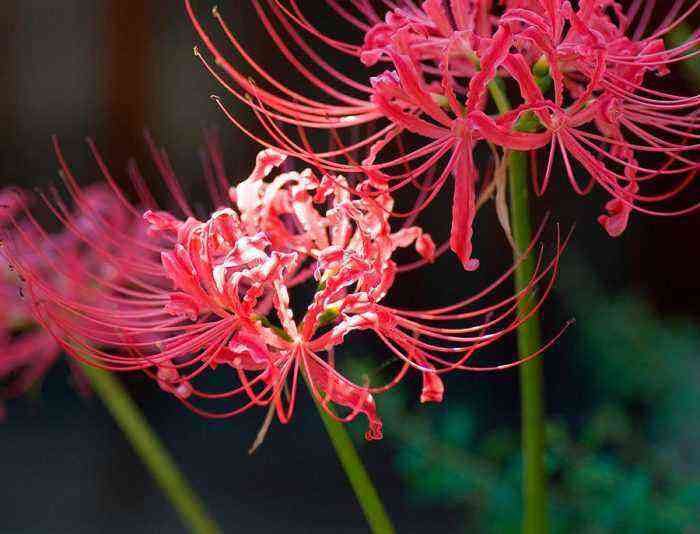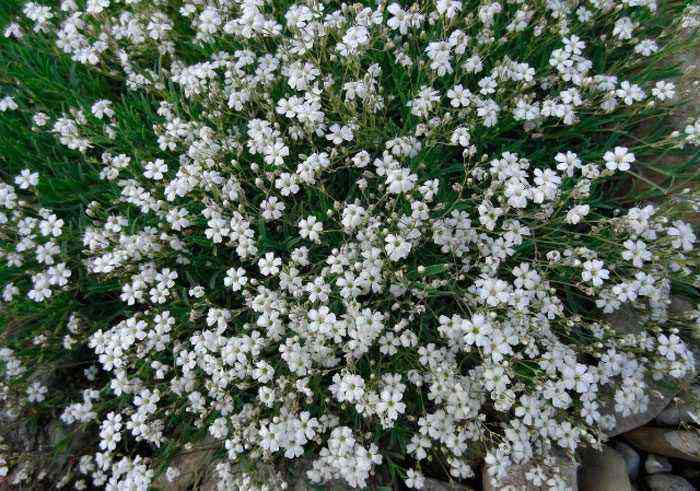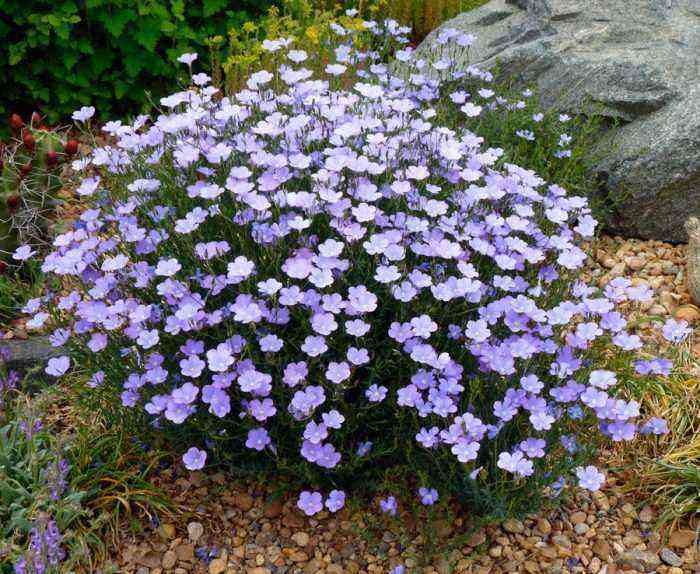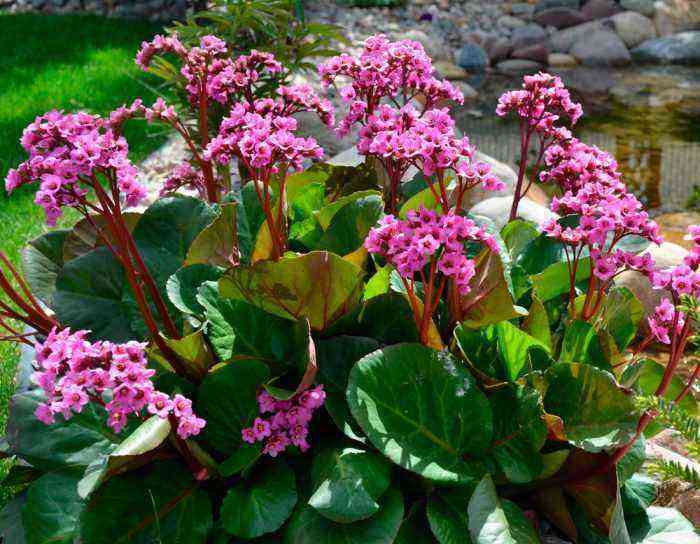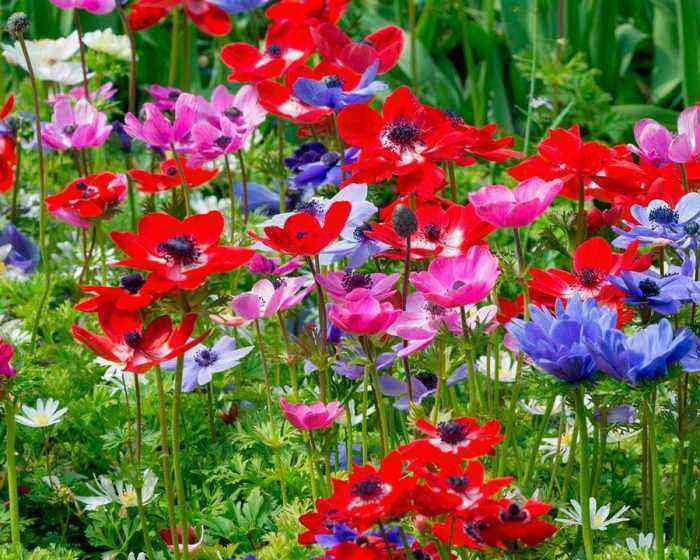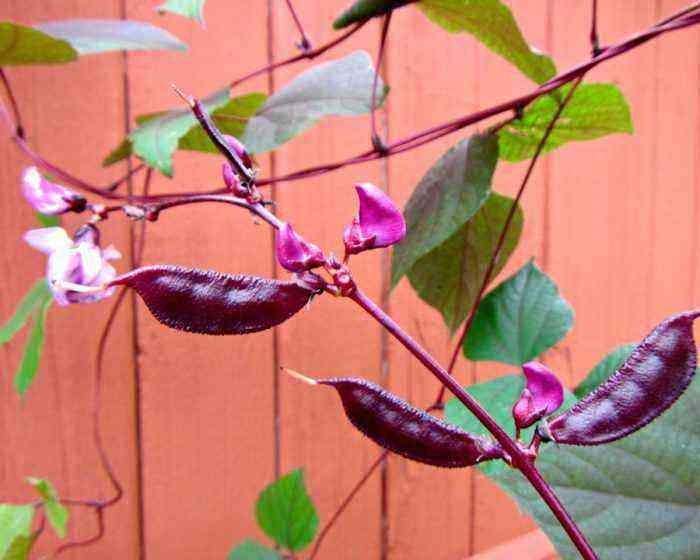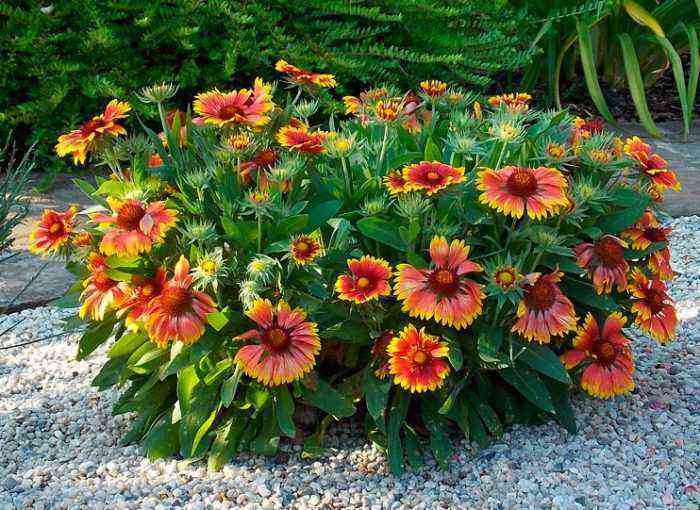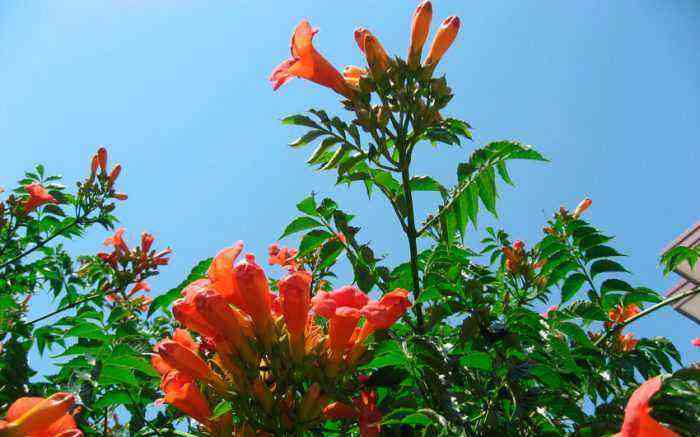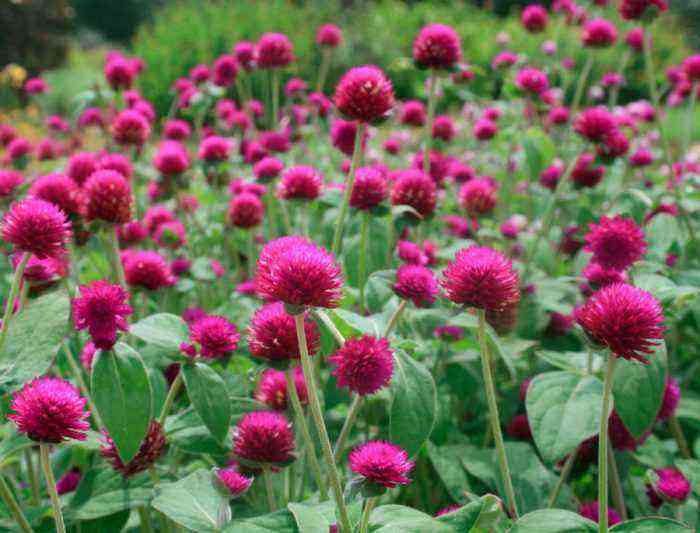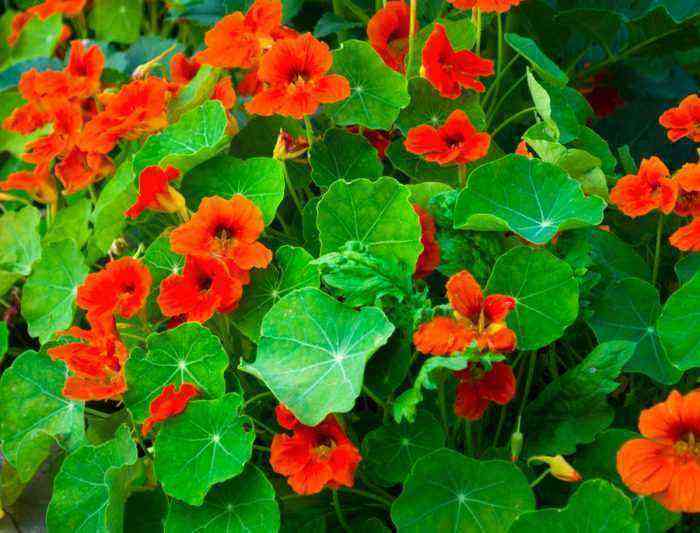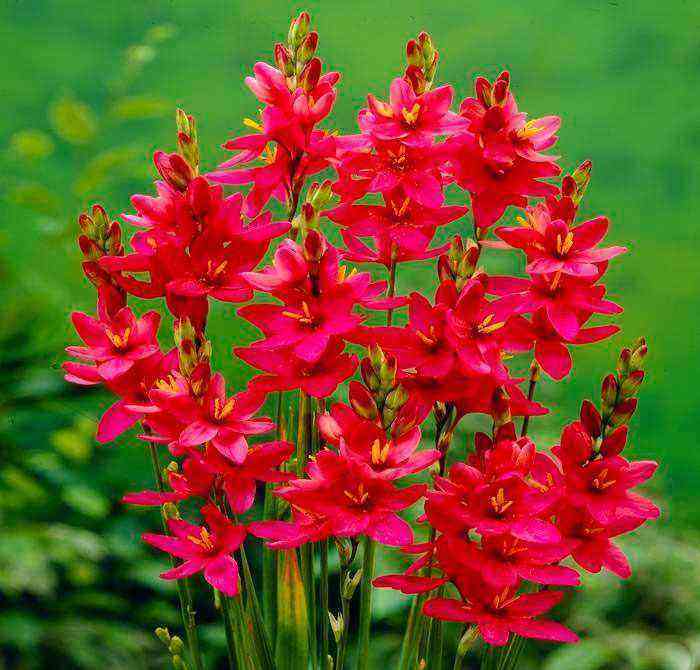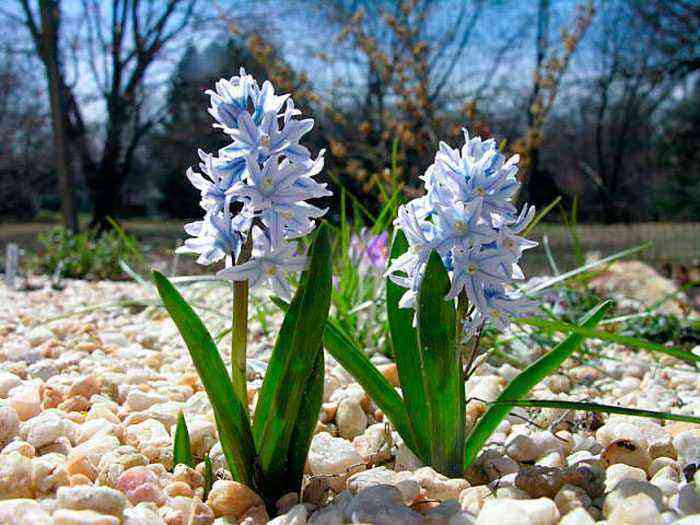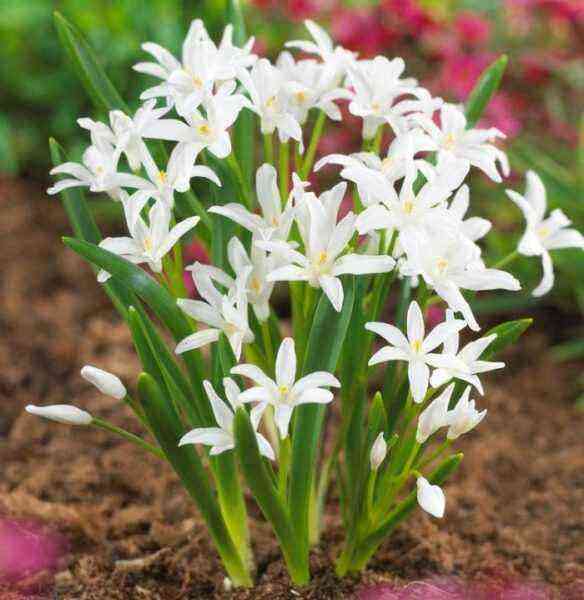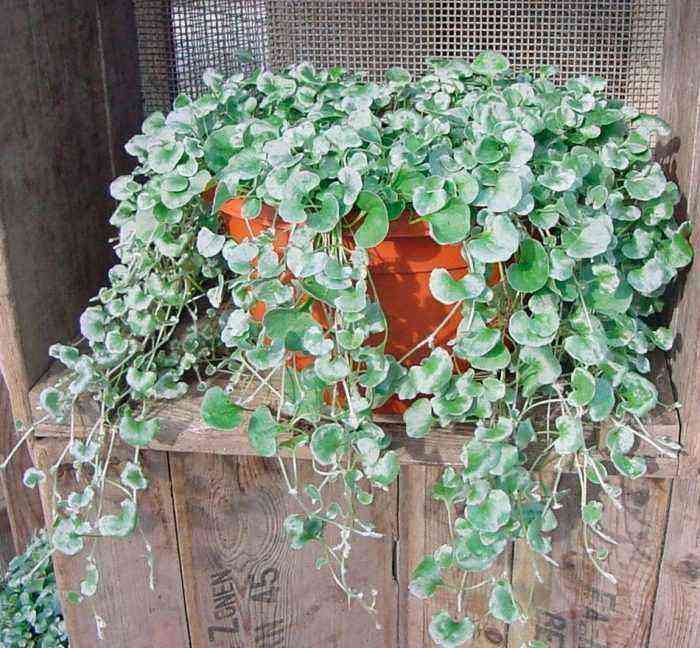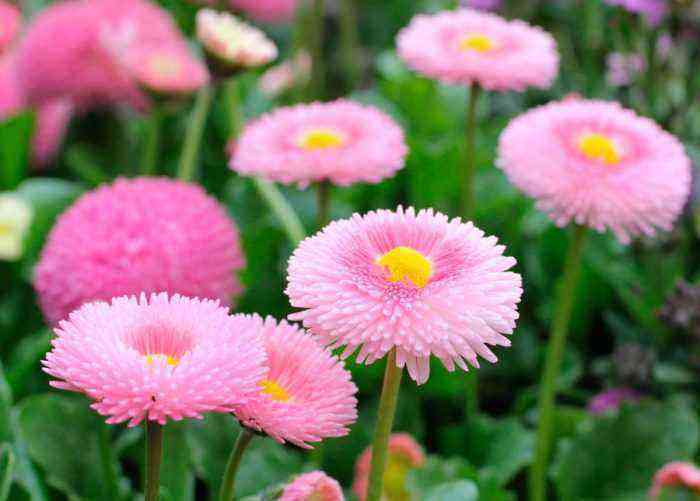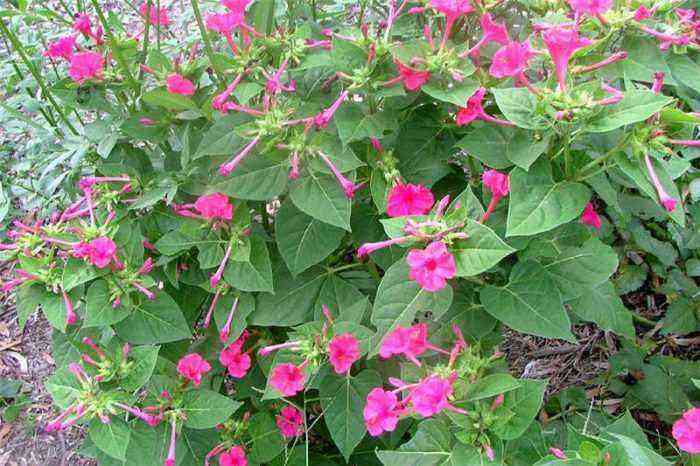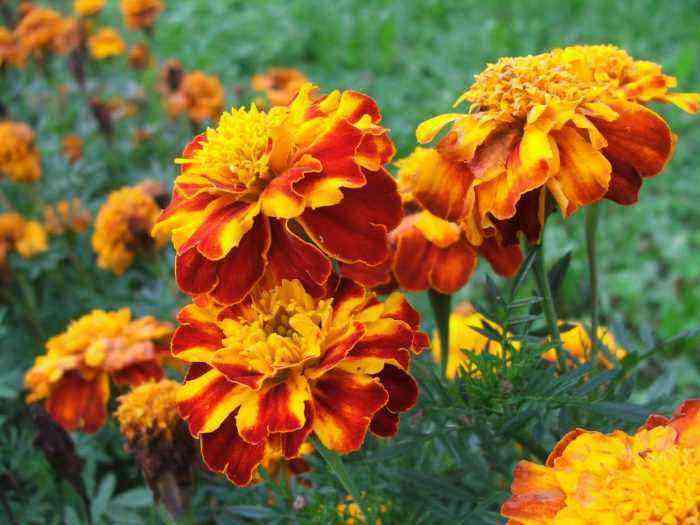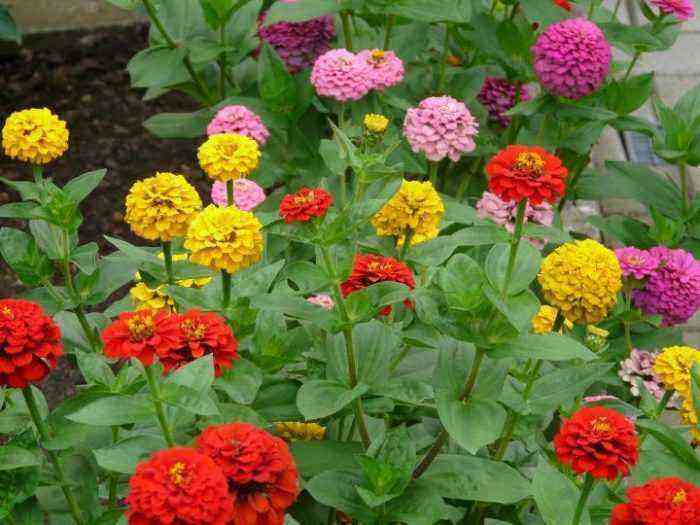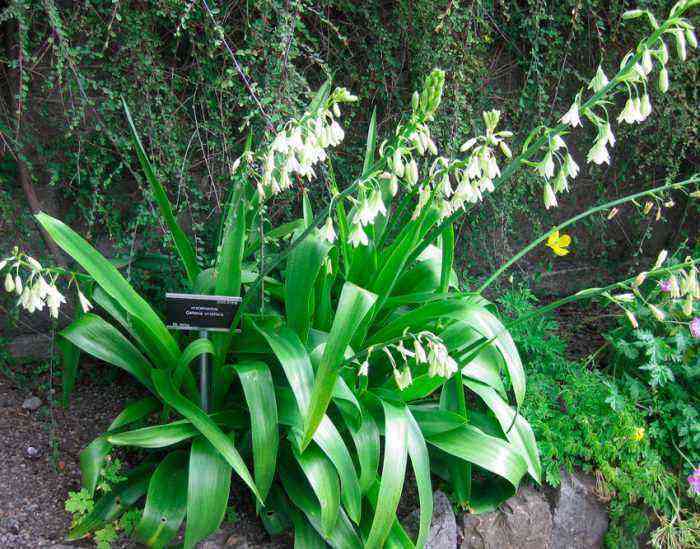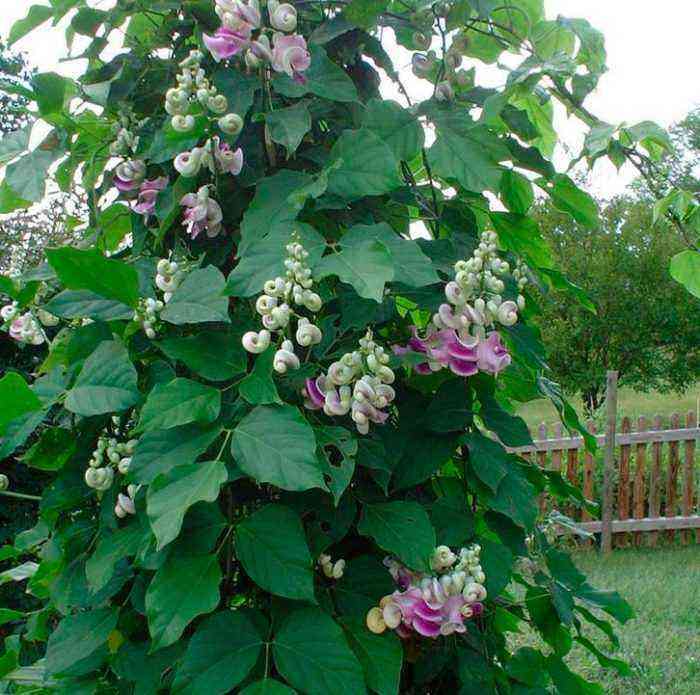The herbaceous perennial plant Eremurus, also called shrysh, or shiryash, is a representative of the subfamily of the asphodelic family of the Xanthorrhea family. This genus unites more than 40 species, hybrids and varieties. The name of such a flower is derived from two Greek words, which in translation mean “desert” and “tail”. Looking at the dense tall flower stalks, one can immediately understand why people who lived in ancient civilization named such a plant exactly Eremurus. For people living in Central Asia, the words shrysh and shiryash mean glue, the fact is that in these places, technical glue is obtained from the roots of such a flower. A plaster is made from the dried and powdered roots. If the roots are boiled, then they can be eaten, while they taste similar to asparagus, and they also eat leaf plates of some (not all!) Species. Any part of such a plant can be used to color the natural fiber yellow. Eremurus was first described in 1773 by the Russian traveler, geographer and naturalist P. Pallas. They began to grow these flowers in the botanical gardens of Western Europe and Russia already in the sixties of the 19th century, more than half a century later the first hybrid was born, while breeders do not stop working with Eremurus to this day.
Features of eremurus
Eremurus has a root that looks like a starfish. The diameter of the Cornedonian varies from 10 to 15 centimeters, and its shape is disc-shaped, twisted fleshy roots that are cylindrically or spindle-shaped thickened extend from it, while they stick out in different directions. On the bush, most often there is a large number of flat triangular-linear leaf plates, which can be narrow or wide, their lower surface is keeled. A large elongated cyst-shaped inflorescence of a meter length is located on a single leafless shoot. Bell-shaped flowers on the peduncle are arranged in a spiral, while they can be colored yellow, brown, dusty red or pink. Flowers begin to open from the bottom of the inflorescence, with each flower withering approximately 24 hours after blooming. The duration of flowering directly depends on the type and variety of the plant and can vary from 10 to 40 days. The fruit is a three-celled semi-lignified or membranous capsule of almost spherical shape, which cracks when ripe, its surface can be wrinkled or smooth. Triangular wrinkled seeds have 1 transparent wing. Such a flower is a very good honey plant.
Growing eremurus from seeds
Sowing
Sowing seeds in open soil is carried out at the beginning of the spring period. When the seedlings appear, they will need to be planted, while a distance of 0,3 to 0,6 m should be kept between the bushes. However, experienced gardeners recommend growing eremurus through seedlings.
Seedling
Sowing seeds for seedlings should be carried out in September – October. A container for seedlings should be chosen one that has a depth of at least 12 centimeters. The seeds must be buried 10-15 mm, while the container for germination is placed in a cool (about 15 degrees) place. In early spring, seedlings should appear, however, not all seeds can sprout, but all because some of them can germinate up to two years. Seedlings should be watered more often than adult plants, after the leaf plates wither, a dormant period sets in, and at this time it is recommended to rearrange the eremurus in a dark room. When September or October comes, the plant will need to be transplanted into individual pots, which are taken out into the street. After the frosts begin, the taken out seedlings will need to be covered with compost, foliage or spruce branches, while it should be borne in mind that the layer should not be thinner than 20 centimeters. The shelter is cleaned in spring, when it will be warm enough outside. Thus, seedlings are grown for 3 years. After that, you should plant the Kornedonts in open soil. After the aerial part of them grows, it will be necessary to start looking after the bushes in the same way as for adult specimens.
Planting eremurus in open ground
What time to plant
It is necessary to plant both purchased and self-grown planting material in September. For planting, you should choose a lighted open place with well-drained soil, since this flower reacts extremely negatively to stagnant liquid in the soil. Such a plant has very strong stems that are not afraid of gusts of wind. In the wild, Eremurus prefers to grow on plateaus, where it is often neutral or alkaline soil. However, this flower can be grown in almost any soil.
Features of landing
In the event that on the site selected for planting, the groundwater is high or the soil has low permeability, then in this case you will need to make a drained flower bed. Such a flower bed should be high, while gravel, crushed stone or pebbles can be used as drainage. The drainage is covered with a forty-centimeter layer of slightly alkaline or neutral soil and it is best if it consists of compost (humus) and turf soil (1: 3), which must be mixed with a small amount of fine pebbles or coarse sand.
If the soil on the site is well drained, then such a flower bed does not need to be made. The planting hole should be wide and its depth can vary from 25 to 30 centimeters. A five-centimeter thick drainage layer is laid on its bottom, which is sprinkled with soil mixture. A cornedone is laid on top of it, while trying to straighten the delicate roots so that they look in all directions, or very carefully pass the plant out of the pot. The bulbs should be deepened by 5-7 centimeters. If large species are planted, then a distance of 0,4 to 0,5 m should be observed between the bushes, and for small species it is 0,25–0,3 m. The row spacing should be about 0,7 m. The planted plants should be water. A plant grown from a seed will bloom only 4-7 years after germination, but only if the soil where this eremurus is grown is not overly saturated with nutrients. It should be borne in mind that in oily soil such a flower builds up a lush green mass and at the same time completely stops blooming.
Caring for eremurus in the garden
It is quite simple to care for Eremurus. From spring to the second half of the summer period, in dry and hot weather, the plant should be provided with very abundant watering. If it rains regularly, and at the same time the soil is wet all the time, watering may not be carried out at all. After the plant blooms, which happens in June, it can no longer be watered.
Before winter, superphosphate should be added to the soil on the site (per 1 square meter from 30 to 40 g), at the beginning of spring it is recommended to feed the Eremurus with complex fertilizer (per 1 square meter from 40 to 60 g), and also rotted manure or compost (on 1 square meter from 5 to 7 kilograms). In the event that the soil on the site is poor, then before the plant blooms, it must be fed with ammonium nitrate (1 g per 20 square meter). During dressing, it should be borne in mind that it is necessary to limit the amount of manure and nitrogen introduced into the soil, otherwise the bushes will be less resistant to disease and frost.
After the rain has passed or the plant is watered, it is necessary very carefully, so as not to injure the roots, to loosen the surface of the soil, while removing weeds.
When growing eremurus, one very important nuance should be taken into account, after the leaves of the flower die off in the summer, it is recommended to dig it up. The Cornedonians are dried and stored in a well-ventilated room for at least 20 days. This is necessary for the further life of the eremurus. If not all leaf plates have died out or turned yellow, then all the same, the Cornedonian should not be left in the soil due to heavy rains, which, as a rule, are observed in the last summer or first autumn weeks. Remember to dig out the bushes with great care. In the event that you do not have the desire or time to dig up the plants, then you should make a shelter from the rain (like a gazebo) over the area where they grow.
Reproduction of eremurus
Eremurus can be propagated not only by the generative (seed) method, which is described in great detail above, but also by the vegetative one. It happens that in spring one or several small outlets grow near the main outlet, this indicates that the formation of daughter buds has occurred, and each of them has roots and a bottom. If desired, separate the children, while the places of the breaks should be sprinkled with ash and dried. Then the Coredonian will have to be seated. In the event that, with a slight pressure, the children did not come off, you will have to separate them only next year. However, there is one trick, before planting the kornednets, they are separated. To do this, they need to be cut from below, while remembering that each of the parts must have several roots. Then you need to sprinkle the cuts with wood ash and plant the whole family as a whole. Next year, each of the parts will have their own roots and buds, and they can be easily divided according to the same incisions. It is very important to remember that an adult bush can be divided no more than 1 time in 5 or 6 years.
Diseases and pests
Remember that Eremurus must be protected from pests and diseases. This plant is capable of damaging not only aphids and thrips, but also moles, slugs, and mice. In order to destroy harmful insects, the bushes should be treated with insecticides. Slugs must be removed from the bushes manually. However, if there are a lot of gastropods, then you just need to make bait. To do this, dark beer is poured into bowls, and then they are distributed over the area. Slugs will creep in heaps to these baits, and you just have to collect them in a timely manner.
Mice and moles love to feast on the roots of such a flower, from which they begin to rot, and the plant eventually dies. In the event that any of the specimens is lagging behind in development and has a stunted appearance, it should be dug up. It will be necessary to cut out all rotting areas from the roots, after which the places of the cuts are sprinkled with wood ash and wait until they dry out. Then the bush is again buried in the soil. In the event that you want to get rid of mice, then several poisoned baits should be laid out on the site, while remember that such rodents are vegetarians.
Eremurus can get sick with rust or other fungal and viral diseases, as well as chlorosis. If it is damp and warm outside, then black or brown streaks may form on the leaf plates of the bush, which means that the plant is infected with rust. If you do not start to treat it in time, then the bush will soon lose its decorative effect. In this regard, as soon as the first signs of the disease were noticed, the affected specimen should be treated with a fungicide (Topaz, Fitosporin, Zaslon, Skor, Quadris, Barrier, etc.). Chlorosis is manifested by yellowing or blanching of the leaf plates. In this case, the bush is dug up and processed in the same way as in the case of rodents. If the surface of the leaf has become lumpy and at the same time spots of yellow color have formed on it, then this indicates infection of the bush with a viral disease. The carriers of such diseases are thrips, aphids and bugs, while an effective drug has not yet been created from them. For the purpose of prevention, harmful insects should be destroyed in a timely manner. Infected bushes need to be dug up and destroyed as soon as possible, since the disease can spread to other plants.
Eremurus after flowering
Seed collection
Good seeds can only be harvested from the bottom of the candle inflorescence. In this regard, it is recommended to select 2 inflorescences and shorten them from the top by 1/3 part. During ripening, the fruits turn beige. Seed collection should begin in the second half of August. The inflorescence trimmed with pruning shears should be placed for ripening in a well-ventilated and dry room. In the last days of October, well-dried boxes should be rubbed with your hands over a newspaper sheet, on which the seeds will be poured. They are purged and sown.
Wintering
As a rule, Eremurus is highly frost-resistant. However, there are thermophilic species that need shelter for the winter; for this, the site is covered with a layer of peat or compost (at least 10 centimeters thick). Cornedonians that were dug up in the summer cannot be stored all winter, because as soon as spring comes, they begin to actively grow, even not planted. Planting in open soil should be carried out in the autumn, while planting must be covered with a layer of peat. At the same time, for regions with frosty winters with little snow, it will be necessary to lay spruce branches on top. The shelter must be removed in springtime when frost threats are over. If, nevertheless, frost is expected, then the site will need to be temporarily covered with a covering material, for example, lutrasil.
Types and varieties of eremurus with photos and names
Eremurus has a fairly large number of species and varieties, so only the most popular and beautiful ones will be described below.
Eremurus aitchisonii
This species can be found in natural conditions on the rocky highlands of the Western Tien Shan, Afghanistan and the Western Pamirs. This Eremurus prefers to grow in mixed forests next to pistachios, maples and walnuts. It is the earliest flowering species, so, its flowering begins in April, but its growing season is short. There are from 18 to 27 large keeled broad-linear leaf plates, painted in a rich green color, they are smooth along the keel, and rough along the edge. The stem is rich green glossy, on its surface at the base there is pubescence, represented by short hairs. A loose, cyst-shaped cylindrical inflorescence can reach 1,1 m in height, and the diameter reaches 17 centimeters. It can contain from 120 to 300 flowers, while in this species the number of flowers can reach 500. In flowers, white bracts have a dark vein, the color of the pedicels is purple-brown, and the perianths are deep pink.
Eremurus albertii
In the wild, this species can be found in the throat of the Fergana Valley, in Kabul and in Turkey. The height of the bush with pale brown roots is about 1,2 m. Straight bare leaf plates are directed upwards. The bare stem of a dark green color is covered with a bluish bloom. On it there is a loose, multi-flowered raceme-like inflorescence reaching 0,6 m in height, and about 12 centimeters in diameter. The flowers have white bracts with a brown vein. The perianths are wide open, they are the color of raw meat with a brown vein. This species is one of the most beautiful. Cultivated since 1884.
Eremurus robustus
In the wild, such a plant is found in the middle and upper belts of the Pamir-Alai, as well as in the foothills of the Tien Shan. The roots are slightly fusiform-thickened and colored brown. Broad-linear naked keeled leaf plates are colored dark green, and on their surface there is a bluish bloom, they are rough along the edge and smooth along the keel. There is a bluish bloom on the surface of the green bare stem. It has a cylindrical racemose inflorescence, the length of which can reach 1,2 m. It contains about 1000 flowers, the color of their perianths is white or light pink, and the pale brown bracts have a dark vein.
Eremurus olgae
This type is considered one of the most common. In nature, it can be found from the Southwestern Pamir-Alai to the Western Tien Shan, and this flower can also be seen in Pakistan, in the northern part of Afghanistan and in the northwestern regions of Iran. The height of the bush can reach up to 1,5 m. The roots are slightly fusiform-thickened, they have an almost cylindrical shape, and on their surface there is often pubescence, the color is dark gray. On one bush, up to 65 keeled dark green narrow-linear leaf plates can grow, there is a bluish bloom on their surface, they are rough along the edges. The color of the stem is dark green, there is a bluish bloom on its surface, it reaches a height of no more than 100 centimeters. It houses a racemose inflorescence of conical or cylindrical shape, the length of which can reach 0,6 meters, and the diameter – up to 15 centimeters. The diameter of the wide-open flowers is 35 mm, the color of their perianths is pale pink or pink, there is a yellow spot at the base, and they also have a dark red vein. There are flowers with perianths of white color with a green vein. The flowering time depends on the climate in the region where the plant is grown and can be observed in May – August. Cultivated since 1881.
Eremurus bungei, or Eremurus narrow-leaved, or Eremurus deceiving (Eremurus stenophyllus)
In nature, this flower can be seen in the upper and middle belt of the Kopetdag and Pamir-Alai mountains, as well as in the northern regions of Iran and Afghanistan, while the plant prefers to grow in rose gardens, as well as in maple, cherry-plum and walnut forests. The bush has a height of about 1,7 m. The outstretched cord-like roots are colored brown-gray. On the surface of narrow-linear naked keeled leaf plates there is a bluish bloom. The green stem may have coarse hairs at the base or be completely naked. The dense, cylindrical, racemose inflorescence is about 0,65 m high and about 50-60 mm in diameter. Each inflorescence can have 400-700 yellow-golden wide-open flowers, which reach 20 mm in diameter. It has been cultivated since 1883. This species is one of the most beautiful, it is used both to decorate the garden and to create dry bouquets.
Also interesting enough for gardeners are such species as: eremurus Tunberg, white-flowered, Suvorov, Tajik, Crimean, Tien Shan, Turkestan, beautiful, Sogdian, pinkish, Regel, fluffy, comb-shaped, small-flowered, Nuratava, amazing, yellow, milky, Kopetdag, Korzhinsky, Kaufman, Junge, Inder, Hissar, Ilaria, Himalayan, comb, crested, Zinaida, Zoya, Kapyu, white, Bukhara, etc.
A whole series of excellent Shelfold hybrids were born thanks to the crossing of Olga’s Eremurus and Bunge. Flowers in such plants can be of different colors from yellow-orange to white. For example, the flowers of the Isobel variety are pink with an orange tint, while Rosalind’s flowers are pink, White Beauty’s are pure white, and Moonlight’s are pale yellow. Also, thanks to these species, a group of highdown hybrids was born, which are not yet so popular. Their tall varieties are Gold, Citronella, Lady Falmouth, Sunset, Don and Hydown Dwarf and Golden Dwarf. In the middle lane, Ruiter’s hybrids created using Eremurus isabella are very popular among gardeners, popular varieties:
- Cleopatra… This variety was bred in 1956. The brown-orange buds bloom into flowers, on the outer surface of which there are a large number of dark veins. The color of the stamens is rich orange. The stem reaches no more than 1,2 m in height.
- Pinocchio… The variety was bred in 1989. The flowers are sulfur-yellow, and the stamens are red-cherry. The stem has a height of no more than 1,5 m.
- Obelisk… This variety was born in 1956. The height of the bush is about 1,5 m. White flowers have an emerald center. And there is also the Romance variety, which has salmon-pink flowers; Roford variety with salmon flowers; grade Emmy Ro with yellow flowers.
